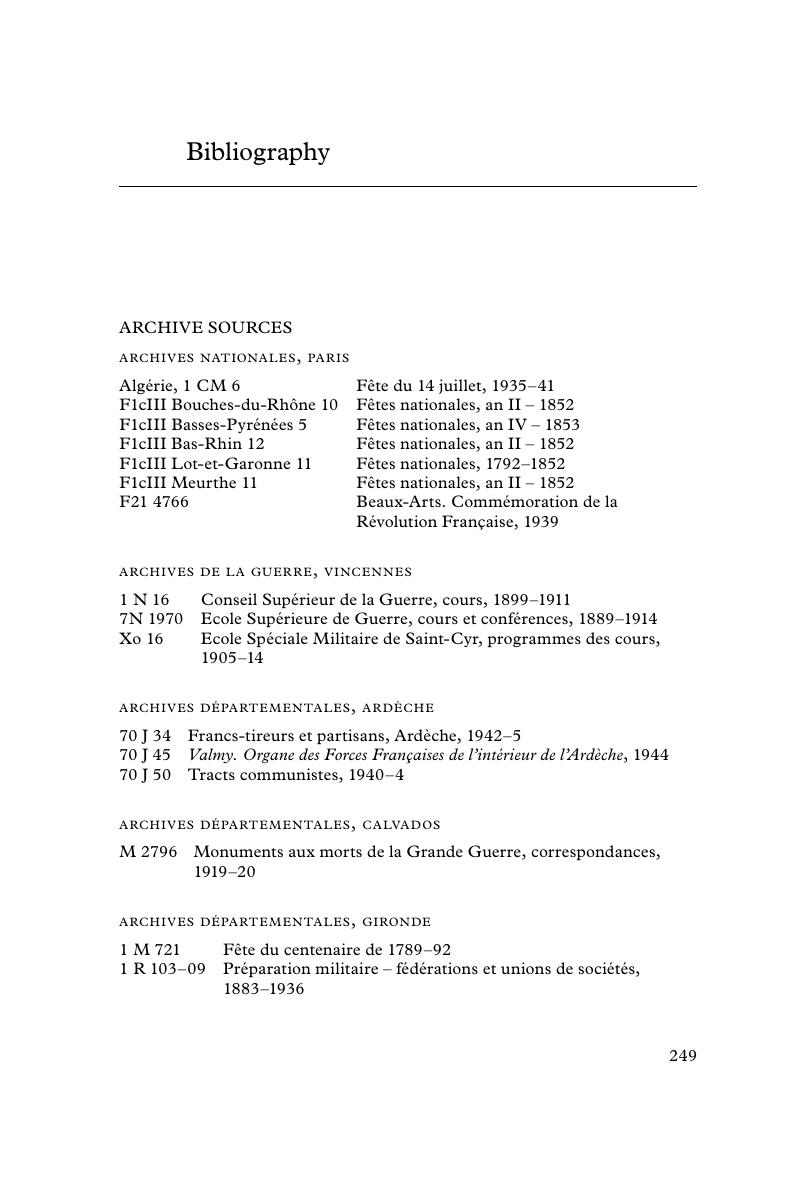Book contents
- Frontmatter
- Contents
- Acknowledgements
- 1 Introduction
- 2 Creating the legend
- 3 Napoleon and the blurring of memory
- 4 Voices from the past
- 5 The hollow years
- 6 The Franco-Prussian War
- 7 The army of the Third Republic
- 8 Educating the army
- 9 Educating the republic
- 10 The First World War
- 11 Last stirrings
- 12 Conclusion
- Bibliography
- Index
- Titles in the series
- References
- Frontmatter
- Contents
- Acknowledgements
- 1 Introduction
- 2 Creating the legend
- 3 Napoleon and the blurring of memory
- 4 Voices from the past
- 5 The hollow years
- 6 The Franco-Prussian War
- 7 The army of the Third Republic
- 8 Educating the army
- 9 Educating the republic
- 10 The First World War
- 11 Last stirrings
- 12 Conclusion
- Bibliography
- Index
- Titles in the series
- References
Summary

- Type
- Chapter
- Information
- The Legacy of the French Revolutionary WarsThe Nation-in-Arms in French Republican Memory, pp. 249 - 266Publisher: Cambridge University PressPrint publication year: 2009

